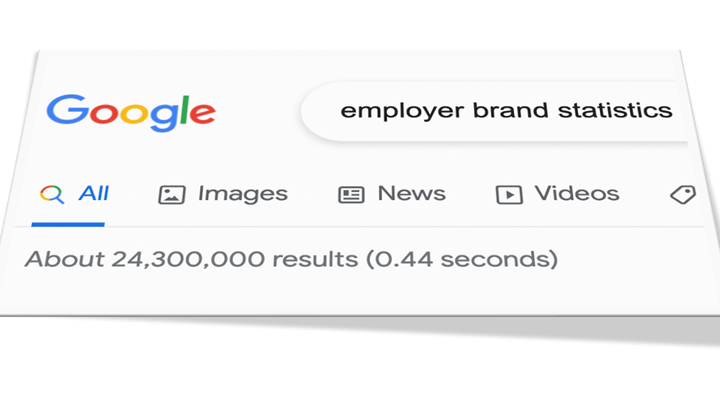Stop Gassing On: It's Time to End Greenwashing
Employees are starting to see right through greenwashing. Thankfully, there are many different approaches that companies can take to move beyond the green sheen...
Corporate Social Responsibility is on the rise. Employees and consumers are responding to initiatives and ‘honest’ brands more than ever, particularly amongst the younger generations, and business leaders are aware of this.
Ben Page, CEO of the global market research firm Ipsos, recently pointed to statistics which stated that the number of business leaders who view social responsibility as one of the most important factors to promote has risen from two per cent to 21 per cent since just 2018. The number of people who view sustainability as a critical factor has also doubled.
Simultaneously, the war for talent has driven talent acquisition leaders to consider new ways to differentiate their brand from their competitors. With the climate high on the agenda, many leaders consider environmental policy to be an ideal marker that proves their company cares for more than just their employees or their bottom line, playing an active role in the world at large.
Calling Out Greenwashing
However, the demand for ethical policies has also given rise to greenwashing, token gestures from brands that miss the full picture. Employees want to make a difference; swapping out plastic straws from refreshments is a small start, but it isn’t going to enable employees to play a role in the company’s environmental policy and it isn’t enough to win over prospective talent.
Authenticity is on the rise too. Employees are increasingly savvy to vague statements and promises without evidence, and the rise in resignations – including repeat resignations – has proven that employees are less likely to settle when a company doesn’t match up to what was promised to them from the outset. Furthermore, social media has made it far easier for dishonest companies to be found out for bluster and lacklustre policies.
The easiest part is making sure that your messaging is not built on vague sentiment to cover up for inaction, and not promising more than what the company is capable of delivering. All companies will go through stages of addressing their effect on the climate, and almost all will find that changes in their approach need to be made – and that’s okay. It is better for companies to be honest when they are not where they want to be, or when they are addressing a known problem, and reflect it in their messaging.
1% for the Planet
Beyond honest messaging, one of the ways to avoid greenwashing is to engage with third-party certification. Simultaneously, this offers a symbol of recognition that prospective employees may know or trust whilst also setting a benchmark for the company to both attain and retain.
1% for the Planet describes itself as ‘being founded to prevent greenwashing, certify reputable giving and provide accountability’. As the name suggests, one per cent of a company’s proceeds must go to environmental causes.
This benchmark is something which the organisation concedes is a ‘high-bar commitment’ but one which can provide a real benefit – both to the environmental and social causes, and to the outreach that member companies can have. ‘We amplify the impact of our network through our brand credibility, abundant member services and impact storytelling, 1% for the Planet states. ‘In short: our globally recognized, trusted platform gives your giving even more power.’
For talent acquisition leaders that have the benefit of their seal of approval, the 1% for the Planet logo offers far more than empty words – it is a guarantee that the company values authenticity, wants itself to be associated with like-minded environmental organisations and is willing to go a step further to be transparent with both its employee base and the wider world.
Patagonia Goes the Extra Mile
Patagonia is one of the most recognisable members of 1% for the Planet – the company refers to 1% as its ‘self-imposed Earth tax’ – but the outdoor clothing brand hasn’t stopped there.
“We aim to use the resources we have – our voice, our business and our community – to do something about our climate crisis,” Patagonia declares on its website. It’s a loud, courageous statement that many a greenwashing company would love to make, but Patagonia has made certain to embrace that ethos into everything that it does, including its employer brand.
As well as 1% for the Planet, its commitment to the environment has seen Patagonia offering lifetime guarantees on its products, suing the US government for reducing national parks and funding environmental non-profits to the tune of over $100 million.
Specifically for employees, Patagonia offers ‘Environmental Internship Programs’ in which “employees from all parts of the company are allowed up to two months away from their regular roles to work for an environmental group of their choice, while continuing to earn their paycheck and benefits.”
Cynics might suggest that it’s no surprise to see a company that relies outdoor exploration be so keen on environmental policy. Of course, from an employer brand perspective, the company knows that environmental policies will appeal most to the exact talent that they want to hire and collaborate with – those who have a keen appetite for the outdoors.
What is fascinating about Patagonia, however, is that environmental activism isn’t an accessory to its employer brand, or even its consumer brand – the activism is part of who it is, and the branding is built around that.
In a LinkedIn article, the Global HR Officer Dean Carter spoke about how Patagonia didn’t set out its ethos to ‘win the war on talent’. Quoting the rock-climber Yvon Chouinard, Carter suggested that: “every time we’ve elected to do the right thing, it’s turned out to be more profitable.”
Not the other way around. The ethos comes first – the stewardship and the happy workforce is built around that.


